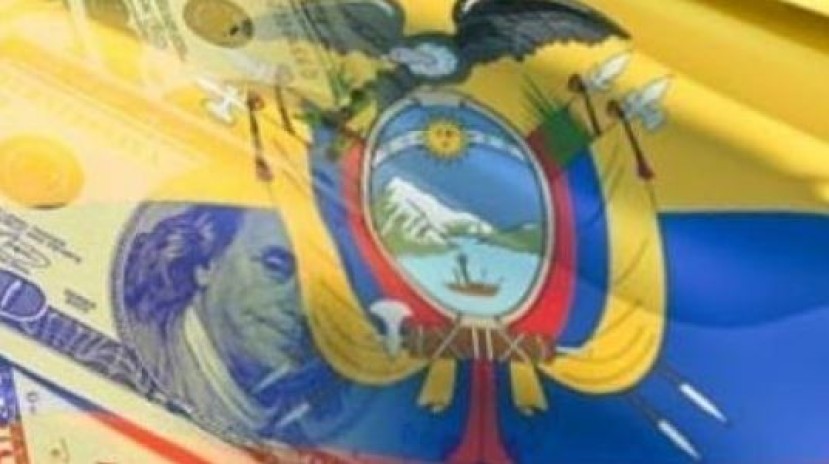Ecuador Internacional
Dollarization Is Hurting Ecuador? Don’t Believe It
Cato Institute 02/12/2015

In the late 1990s, as the Banco Central de Ecuador rapidly expanded the quantity of its currency–the sucre–prices denominated in sucres soared into hyperinflation. In response, Ecuadorians spontaneously adopted the U.S. dollar as a far safer savings vehicle, a far less chaotic pricing unit, and a far more reliable medium of exchange. Demand to hold sucres all but disappeared. With the collapse of the sucre, Ecuador’s government finally bowed to the market verdict and officially dollarized in January 2000. (I have previously written about these events here).
Dollarization has been a clear success. The Ecuadoran monetary and banking systems have been much more stable and trustworthy (real bank deposits have grown considerably) since dollarization, and the economy has enjoyed better growth despite being ruled by a political party that speaks and acts in anti-market tones. Because of its success, dollarization is enormously popular. Even President Rafael Correa, who has complained that dollarization is a “straitjacket” because it prevents expertly managed monetary policy (this is in fact its greatest virtue), promises not to undo dollarization.
This background is useful for considering a recent Wall Street Journal news analysis article entitled “Cheap Oil and Strong Dollar: Ecuador’s Twin Troubles” by Carolyn Cui and Manuela Badawy. As many other writers have done, Cui and Badawy suggest that dollarization is currently hurting Ecuador, that the country “has the misfortune to be an oil producer with a ‘dollarized’ economy that uses the U.S. currency as legal tender.”
Compared to what are these misfortunes? Having oil resources is better than not having them (provided that the wealth is not entirely squandered in battles to control it). And being dollarized has clearly been better for Ecuador than the unanchored monetary policy that preceded it.
Cui and Badawy acknowledge that “dollarization helped officials rein in inflation in 2000.” But this is oddly put. Dollarization is not a policy that local experts can manipulate as a tool, so it is odd to say that it “helped officials” to reduce inflation. Dollarization itself has reined-in inflation. Local officials merely got out of the way. Under dollarization, arbitrage in traded goods ties the dollar price level in Ecuador to the dollar price level in the United States, more or less tightly, just as it ties the California price level to the overall U.S. price level. Inflation rates cannot widely diverge. No local management is needed.
Cui and Badawy immediately continue with the supposed downside: “Now, [dollarization] is depriving them of the relief valve a depreciating local currency can provide at a time when the drop in oil prices is hurting its exports.” This is exactly the line taken by President Correa, who a year ago said that “Dollarization was a bad decision” and that “Right now, it is doing exactly the opposite of what it must do to address the scenario of falling oil prices.”
How might a depreciating currency provide a “relief valve” in a period of declining oil export revenues? Relief can’t come from changing the world prices of Ecuador’s other main exports. Just as oil is competitively and flexibly priced in dollars on world markets, so too are fresh flowers, fresh fruit, and seafood. Flowers grown in a weak-currency country do not have a selling-price advantage over flowers grown in a strong-currency country. The coherent argument for a “competitive depreciation” is rather that considered in dollar terms it cuts wages and other input payments that are priced in local currency. Such input price reductions, the argument goes, are appropriate given the reduced demand for labor and other inputs that follows from the drop in oil revenue (or similar negative productivity shock). And depreciation makes the reductions faster (in a world of “sticky” wages and prices) than can be achieved by waiting for unemployment to force reductions in nominal wages and other input prices. Non-oil export businesses can take advantage of higher profit margins to expand their output and sales.
Read more
Fuente OriginalNotas relacionadas
-
 Impacto del Fenómeno de El Niño en los deslizamientos de tierra en Ecuador
Impacto del Fenómeno de El Niño en los deslizamientos de tierra en Ecuador -
 Viabilidad de colectores solares para calentamiento de agua en edificaciones
Viabilidad de colectores solares para calentamiento de agua en edificaciones -
 Big Data en la geología
Big Data en la geología -
 ¿Qué es la deriva continental y la teoría de tectónica de placas?
¿Qué es la deriva continental y la teoría de tectónica de placas? -
 Noticias de Ecuador. Podcast Noti Oriente [6 de septiembre, 2023]
Noticias de Ecuador. Podcast Noti Oriente [6 de septiembre, 2023] -
 ¿Es la Pirolisis una solución para los residuos de los vertederos?
¿Es la Pirolisis una solución para los residuos de los vertederos?





